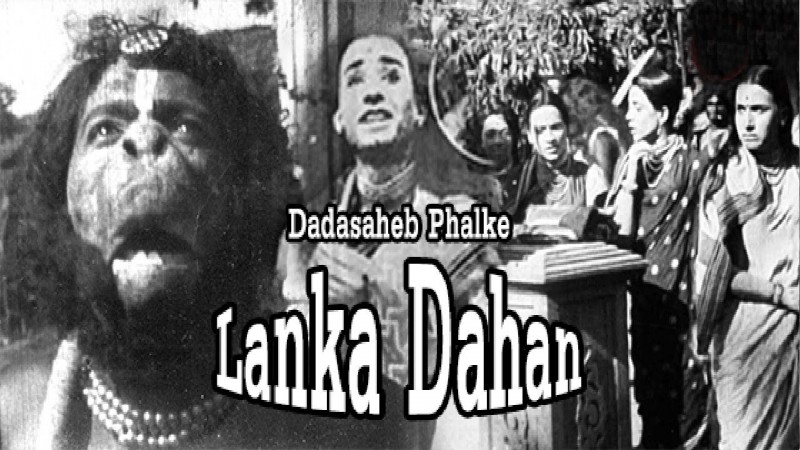
One film in particular in the early years of Indian cinema, when the silver screen was a brand-new canvas for storytelling, managed to captivate audiences' hearts and devotion in a way that was truly extraordinary. The 1917 film "Lanka Dahan," which transcended the realms of entertainment and inspired a profound sense of reverence, swept Mumbai by storm. Not only did this movie tell the epic story of Lord Ram conquering Lanka, but it also pioneered the use of a single actor to portray multiple characters. This article explores the captivating tale of "1917 Lanka Dahan," a masterpiece of the movie industry that inspired unheard-of devotion and demonstrated creativity through Anna Salunkhe's portrayals of Lord Ram and Sita.
"1917 Lanka Dahan" was a cinematic marvel that made an enduring impression on Mumbai's moviegoers during a time when the art of cinema was still in its infancy. The movie portrayed the enduring story of Lord Ram's journey to Lanka, which culminated in the legendary conflict with the demon king Ravana. The story struck a deep chord with viewers, appealing not only to their love of narrative but also to their spiritual sensibilities.
At the center of "1917 Lanka Dahan" was actor Anna Salunkhe, whose ground-breaking portrayal defied accepted standards of cinematic portrayal. Salunkhe not only played the role of Lord Ram, the personification of righteousness, but also that of Sita, the personification of virtue and devotion. Salunkhe's versatility and dedication to her craft are demonstrated by this ground-breaking achievement, which was the first time two main characters were portrayed by a single actor in the same movie.
Beyond its story, "1917 Lanka Dahan" had a significant impact. The audience's reaction to how Lord Ram was portrayed on screen in the movie was astounding. The theater was overcome by a wave of devotion as the image of Lord Ram graced the frames, and spectators were moved to take off their shoes as a sign of respect. The film's ability to blur the boundaries between fiction and faith by bridging the gap between cinema and spirituality was poignantly reflected in this historically unprecedented act of respect.
Aside from the distinctive way in which the characters were portrayed, "1917 Lanka Dahan" also made its mark on history for its spirit of innovation. A notable deviation from the norm was the dual role played by Anna Salunkhe, which provided new opportunities for experimentation in cinematic storytelling. The film's capacity to arouse devotion and reverence in a time devoid of cutting-edge technology and visual effects says a lot about its compelling storytelling and the enduring power of cinema.
"1917 Lanka Dahan" is remembered as a cinematic milestone that mesmerized viewers with its profound story and fresh perspective. The portrayal of Lord Ram and Sita by Anna Salunkhe, as well as the unusual gesture of taking off shoes as a sign of devotion, highlight the film's extraordinary effect on viewers' hearts and minds. This film is a masterpiece that not only expanded the definition of storytelling but also demonstrated the power of cinema to arouse strong feelings and a sense of spirituality. "1917 Lanka Dahan" is still a living example of how early Indian movies could enchant audiences and take them to new worlds of devotion and imagination.
Varun Dhawan's Record-Breaking Chain of Consecutive Hits
Silver Screen Saga: Leading Ladies of the 1980s and 90s Alongside Dharmendra & Sunny
Single Take, Timeless Impact: The Unveiled Charm of Roop Tera Mastana